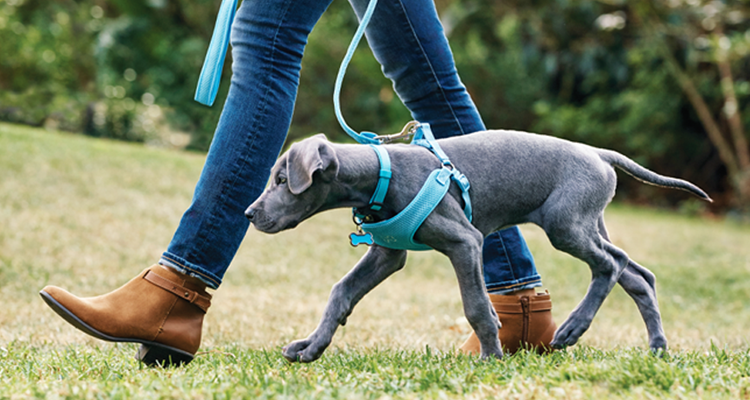Top Pet Educating Techniques Every Owner Must Know

Positive Support Techniques
Making use of positive reinforcement strategies is important for reliable canine training, as it cultivates a relying on bond between the trainer and the pet dog. This method concentrates on satisfying desirable habits as opposed to penalizing unwanted ones, producing a setting for discovering. Rewards can consist of treats, appreciation, or playtime, which motivate canines to duplicate the behaviors that earn them these benefits.

In addition, this approach improves the canine's excitement for training sessions. They are extra involved and receptive when pets link training with favorable experiences. Dog training. Beyond instant behavior alteration, positive reinforcement motivates a joint connection between the dog and instructor, decreasing stress and anxiety and concern
To make the most of performance, it is critical to supply rewards quickly, guaranteeing the canine attaches the habits with the reinforcement. Basically, positive support methods not just generate better-trained dogs but likewise advertise an unified partnership between dog and proprietor.
Clicker Training Approach
The remote control training method is a very reliable strategy that builds on the principles of favorable reinforcement by including a distinctive sound to mark desired behaviors. This technique uses a small handheld gadget that generates a clicking sound, allowing trainers to connect with their pets in a clear and immediate manner. When a dog executes an actions that the proprietor wants to encourage, the remote control is triggered, adhered to by a reward, usually in the kind of treats or appreciation.
The key to effective remote control training depends on consistency and timing. It is essential to click at the exact moment the preferred habits takes place, ensuring that the pet links the audio with the activity and the succeeding benefit. This approach not only improves interaction however additionally cultivates a more powerful bond in between the proprietor and the pet, as it urges interaction and communication during training sessions.
Clicker training can be put on a range of behaviors and commands, from basic obedience to more complex methods. Its adaptability and performance make it a favored strategy among professional trainers and animal proprietors alike, leading the way for a well-trained and receptive canine companion.
Leash Training Fundamentals
Effective chain training is necessary for making certain a safe and pleasurable strolling experience for both pets and their owners. A level collar may work for some dogs, while others might benefit from a harness that decreases drawing.
Introduce your canine Look At This to the leash progressively, permitting them to explore it in a comfortable environment. Once they are accustomed, technique loose-leash strolling. This entails rewarding your pet dog for walking beside you rather than pulling ahead. Use treats and appreciation to reinforce desired actions, and be sure to continue to be tranquil and assertive.
If your pet begins to draw, quit walking right away. Additionally, practice different strolling settings to aid your pet dog adjust to diversions.
Normal practice will solidify your pet dog's understanding of chain rules. Bear in mind that leash training is a recurring process; patience and consistency will generate the ideal results, promoting a positive experience for both you and your canine buddy.
Socialization Methods
Socialization is an essential facet of dog training that must preferably start during puppyhood however can be advantageous at any kind of age. Efficient socialization helps canines develop self-confidence and decreases the probability of behavioral issues. To execute successful socialization techniques, reveal your pet to a selection of atmospheres, people, and various other pets.
Beginning with controlled setups, such as puppy courses or arranged playgroups, where young pets can interact securely. Progressively introduce your pet to new experiences, including various noises, surface areas, and activities. Ensure these encounters are favorable and rewarding to develop a complacency.
For adult pets or those lacking exposure, start with low-stress scenarios. Short, positive communications with pleasant human beings and calm pets can develop positive associations. Use deals with and appreciation to reinforce desirable behaviors during these experiences.

Consistency and Perseverance
Identifying the importance of uniformity and persistence in dog training is crucial for accomplishing long-term results. Educating a canine is a gradual process that calls Full Report for a structured strategy and unwavering commitment from the proprietor. Each command or actions have to be enhanced continually to help the canine understand what is anticipated of them. Inconsistent training can bring about complication, making it hard for the pet dog to comprehend commands or habits, inevitably impeding progression.
Canines, like people, discover at their very own speed. This cultivates a relying on partnership in between the pet dog and owner, motivating an extra willing and enthusiastic student.
To grow consistency and patience, develop a routine training regular, make use of the exact same commands, and guarantee that all relative apply the same training concepts - Dog training. By doing so, you create a stable atmosphere for discovering, allowing your pet to develop and flourish into a well-behaved companion
Conclusion
To conclude, effective pet training techniques, such as positive reinforcement, remote control training, and appropriate important site leash training, are vital for cultivating a healthy owner-dog connection. Furthermore, carrying out socializing approaches and maintaining uniformity and persistence throughout the training procedure contributes dramatically to a pet's total health. By integrating these methods, canine proprietors can help with the advancement of well-adjusted, loyal family pets, eventually improving the lifestyle for both the pet dog and the owner.
Among the most famous methods are positive reinforcement, remote control training, and chain training, each offering one-of-a-kind advantages that contribute to a well-behaved canine. As we discover these fundamental strategies, it becomes noticeable that understanding their nuances can dramatically impact the training experience and the dog's general actions.Utilizing positive reinforcement techniques is important for reliable pet dog training, as it promotes a relying on bond in between the pet dog and the instructor.In conclusion, effective dog training strategies, such as favorable support, remote control training, and proper chain training, are necessary for promoting a healthy and balanced owner-dog relationship. By incorporating these techniques, dog owners can promote the growth of well-adjusted, obedient pet dogs, ultimately enhancing the quality of life for both the pet and the proprietor.
 Edward Furlong Then & Now!
Edward Furlong Then & Now! Alfonso Ribeiro Then & Now!
Alfonso Ribeiro Then & Now! Brian Bonsall Then & Now!
Brian Bonsall Then & Now! Amanda Bearse Then & Now!
Amanda Bearse Then & Now! Nancy Kerrigan Then & Now!
Nancy Kerrigan Then & Now!